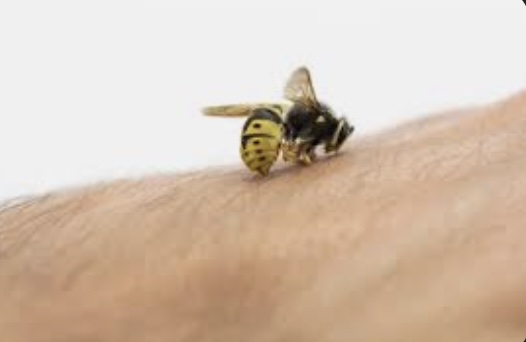The Dangers of Bee Stings_ What You Need to Know

Have you ever been stung by a bee? If so, you know just how uncomfortable and painful it can be. Even worse, some people have severe allergic reactions to bee stings that can lead to anaphylactic shock and even death!
That’s why it’s important to have an understanding of the potential risks associated with being stung and how to treat a bee sting. In this article, we’ll explore the various ways a person can be stung, the potential risks associated with bee stings, natural remedies for relieving pain and swelling from bee stings, and tips on how to avoid bee stings in the first place.
How can a person get stung by a bee?
There are a few ways a person can be stung by a bee. The most common way is to be directly stung by the bee, which happens when it comes into contact with skin or clothing that has come in contact with the bee’s stingers. Another way is for a person to inadvertently disturb a swarm of bees and get caught up in the chaos.
What are the potential risks associated with being stung by a bee?
The biggest risk associated with bee stings is an allergy reaction, also known as anaphylaxis. This can range from mild discomfort to life-threatening symptoms such as difficulty breathing, nausea and vomiting, and hives. If you suspect you may have an allergy to bee stings, you should seek medical attention immediately.
What can be done to reduce pain and swelling from a bee sting?
Once a person has been stung, the first thing they should do is remove any stingers that may be embedded in their skin. They can then apply a cold compress to the affected area and take an over-the-counter antihistamine to reduce itching and swelling. In more severe cases, allergy drops or allergy shots may be prescribed.
What are the natural remedies for relieving pain and swelling from bee stings?
There are a number of natural remedies that can be used to reduce the discomfort associated with bee stings. Applying honey or aloe vera gel directly to the affected area can provide temporary relief. Essential oils such as lavender, eucalyptus, and tea tree oil can also be soothing. Additionally, some people find relief from the discomfort of a bee sting by soaking in an oatmeal bath.
What are some tips to help avoid bee stings?
One of the best ways to avoid getting stung is to be aware of your surroundings. Avoid walking through areas with flowers or plants that bees may be attracted to, and if you do come into contact with a bee, remain calm and move away slowly. Wearing light-colored clothing, avoiding scented products, and not swatting at bees will also help reduce your chances of getting stung.
How to work outside safely with bees
If you work outside with bees, such as in a garden or on a farm, there are steps you can take to minimize your chances of being stung. As mentioned, wearing light-colored clothing can help you avoid bees. It’s also important to wear a beekeeper suit and veil if you are working with large swarms of bees. Additionally, using smoke to distract the bees can be beneficial, as it masks their scent and makes them less likely to sting.
When to seek medical attention
Seek immediate medical attention if you experience any of the following symptoms after being stung: difficulty breathing, dizziness or feeling faint, swelling in your throat or tongue, chest tightness, hives, nausea, and vomiting.
Now that you have a better understanding of how bee stings can be painful and in some cases very dangerous, as well as natural remedies to reduce pain and swelling associated with them and tips on how to avoid getting stung, you’re better equipped to handle the situation should you ever find yourself unfortunate enough to suffer from one.
As always, prevention is key. Being mindful of your surroundings and taking the necessary steps to avoid bee stings can help ensure you are safe from any potential harm.




























